Browallia , also known as the sapphire flower, is a charming and vibrant annual that is often overlooked in gardens. With its delicate blooms and lush foliage, this plant is perfect for adding color to shaded areas. This comprehensive guide covers everything you need to know about growing Browallia, including its benefits, types, planting, care, and management.
Definition and Benefits of Browallia
Browallia belongs to the family Solanaceae and features small, star-shaped flowers that come in shades of blue, purple, and white. Here are some key benefits of growing Browallia:
- Shade Tolerance: Browallia thrives in partial to full shade, making it an excellent choice for darker garden spots where other plants may struggle.
- Long Blooming Season: This plant offers continuous blooms from late spring to fall, providing vibrant color throughout the growing season and enhancing your garden’s aesthetic.
- Low Maintenance: Browallia requires minimal care, making it suitable for both novice and experienced gardeners who want beautiful results without extensive effort.
- Attracts Pollinators: The flowers attract bees and butterflies, promoting a healthy garden ecosystem and supporting local wildlife.
- Versatile Usage: Ideal for mixed plantings, containers, and hanging baskets, Browallia can enhance various garden designs and create stunning visual displays.
Basics of Browallia
- Common Name: Browallia
- Botanical Name: Browallia spp.
- Family: Solanaceae
- Plant Type: Herbaceous annual
- Mature Size: 12–24 inches tall, 12–18 inches wide
- Sun Exposure: Partial to full shade
- Soil Type: Well-drained, rich in organic matter
- Soil pH: Slightly acidic to neutral (6.0 to 7.0)
- Bloom Time: Late spring through fall
- Flower Colors: Blue, purple, white, bicolor
- Hardiness Zones: 10-11 (USDA); often grown as an annual in cooler climates
- Native Area: Native to tropical regions of Central and South America
Choosing Which Browallia to Grow
There are several species of Browallia, but the most commonly grown include:
1. Browallia speciosa (Bush Browallia)
- Description: Features bright blue or purple flowers with a star-like shape, surrounded by lush green foliage that adds texture to the garden.
- Height: Typically grows 12 to 24 inches tall.
- Bloom Time: Blooms from late spring until the first frost, providing a long-lasting floral display.
- Ideal Uses: Perfect for containers, borders, and shaded garden beds, offering versatility in garden design.
- Special Notes: Thrives in moist, well-drained soil and can tolerate a range of light conditions but prefers partial shade for optimal growth.
2. Browallia americana (American Browallia)
- Description: Known for its striking deep blue flowers and compact growth habit, making it a standout in any setting.
- Height: Typically grows 12 to 18 inches tall.
- Bloom Time: Continuous blooms from summer until frost, ensuring vibrant color for months.
- Ideal Uses: Great for mixed containers, borders, and hanging baskets, allowing for creative arrangements in your garden.
- Special Notes: Often used as a bedding plant due to its vibrant color and low maintenance needs, making it a favorite among gardeners.
When to Plant Browallia
Getting the Planting Site Ready
Select a location with well-drained soil rich in organic matter. Browallia prefers slightly acidic to neutral pH levels. Prepare the soil by loosening it and incorporating compost to enhance fertility, ensuring your plants have the nutrients they need to thrive.
Timing for Planting
- Indoors: Start seeds indoors about 6-8 weeks before the last frost date to give them a head start and encourage robust growth.
- Outdoors: Transplant Browallia outdoors after the last frost, usually in late spring, to ensure healthy establishment in the garden.
Specific Timing for Different Regions
- Northern Regions: Plant after the last frost date, typically around mid to late May, to avoid damage from cold temperatures.
- Southern Regions: You can plant earlier, typically in April, taking advantage of the warmer climate.
Growing Browallia
Planting Location
Browallia thrives in partial to full shade. While it can tolerate some sun, it performs best in dappled sunlight or shaded areas, making it perfect for gardens with limited light. Consider under-trees or against walls where light is filtered.
Spacing
Space Browallia plants about 12 to 18 inches apart to allow for proper air circulation and growth. This spacing helps prevent overcrowding, which can lead to disease.
Care and Maintenance
Watering
Browallia prefers consistently moist soil, especially during hot weather. Water regularly, ensuring the soil stays evenly moist but not soggy. Using mulch can help retain moisture and suppress weeds, keeping your plants healthy.
Fertilization
Feed Browallia with a balanced, water-soluble fertilizer every 4-6 weeks during the growing season to encourage healthy growth and blooming. Avoid over-fertilizing, as it can lead to excessive foliage and fewer flowers, diminishing the overall visual impact.
Pruning and Deadheading
Regularly deadhead—removing spent flowers—encourages new blooms and extends the flowering season. Prune back any leggy growth to maintain a bushy appearance and improve air circulation around the plants.
Pest and Disease Management
Browallia is generally resistant to pests, but watch for aphids and whiteflies. If infestations occur, treat with insecticidal soap or neem oil. Ensure good air circulation to prevent fungal diseases like powdery mildew, which can thrive in humid conditions.
Identifying and Treating Diseases
Common issues include root rot and leaf spot. Ensure proper drainage and avoid overwatering to prevent these problems. Treat infections promptly with fungicides or by removing affected plants to protect the rest of your garden.
Identifying and Fixing Signs of Distress
Look for yellowing leaves, wilting, or stunted growth, which may indicate nutrient deficiencies or pest problems. Address these issues by adjusting care routines or using organic pest control methods to keep your plants healthy.
Planting Browallia in the Garden
How to Use Browallia
Browallia can be planted in shaded borders, containers, hanging baskets, or as part of mixed flower beds. Its vibrant flowers and lush foliage create a stunning visual display throughout the growing season, adding depth and character to your landscape.
Companion Planting
Browallia pairs well with other shade-loving plants, such as ferns, hostas, and impatiens, to create a lush, layered garden effect. Its color can enhance the beauty of other flowers in the garden, providing a harmonious blend of textures and hues.
End of Season Care for Browallia
As the growing season comes to an end, it’s important to care for your Browallia properly. If you live in a cooler climate, consider lifting and composting the plants after the first frost, as they are typically grown as annuals. This helps to maintain garden health and prepares your space for winter.
Collecting Seeds
For those interested in propagation, Browallia can be grown from seed. Allow seed pods to mature on the plant, then collect and store them in a cool, dry place for planting the following year. This can save money and ensure you have your favorite varieties ready for next season.
Additional Tips for Successful Browallia Growth
- Humidity: Browallia prefers moderate humidity levels, so consider misting the plants or using a humidity tray if growing indoors to create a suitable environment.
- Temperature: Keep Browallia in moderate temperatures; they typically thrive in 60-75°F (15-24°C) during the day, which helps them flourish and produce vibrant blooms.
- Soil Quality: Use a quality potting mix that retains moisture but drains well for container-grown Browallia. This balance is key to preventing root rot while ensuring plants have access to the moisture they need.
Conclusion
With its beautiful blooms and low maintenance requirements, Browallia is an excellent choice for gardeners looking to add color to shaded areas. By following the care guidelines in this comprehensive guide, you can enjoy a vibrant display of sapphire flowers from late spring to fall, enriching your garden with their charm and enhancing your outdoor space.their charm.


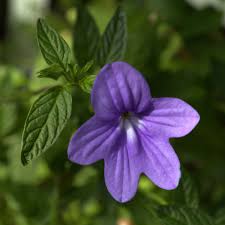
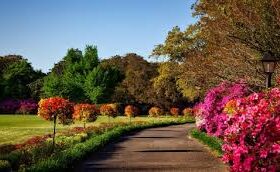
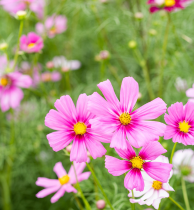
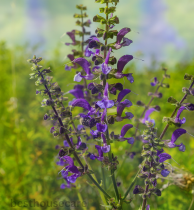
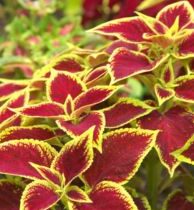
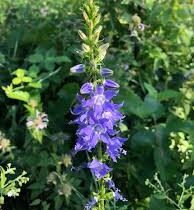
Leave a Reply
View Comments